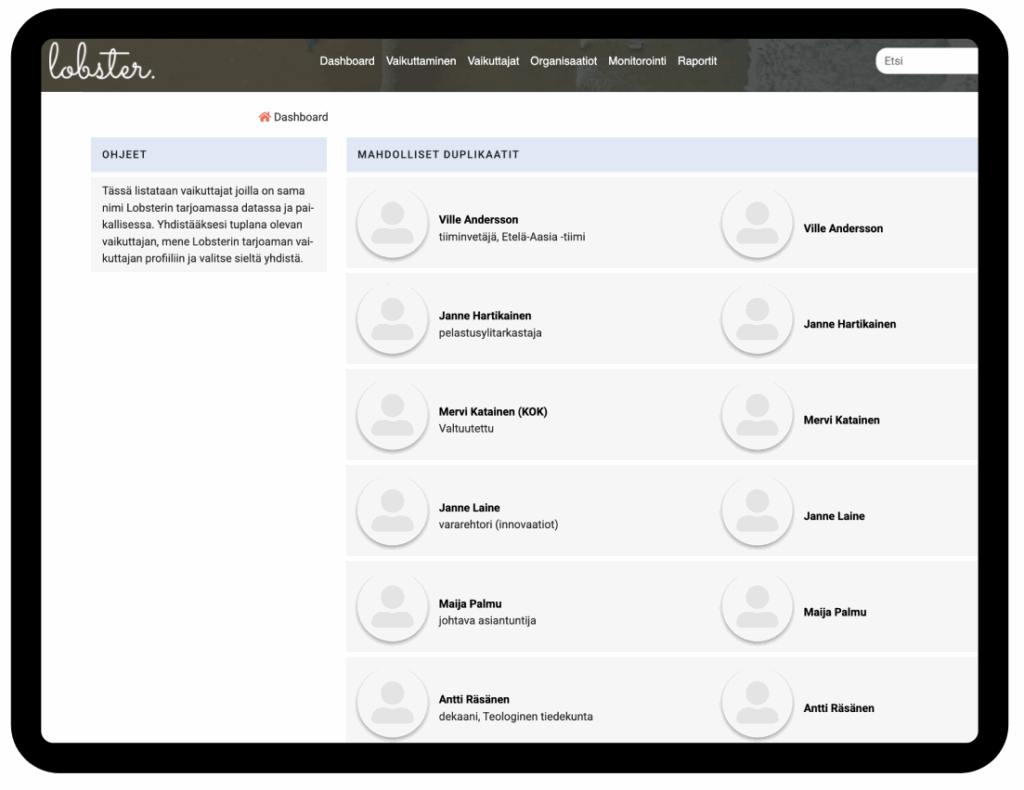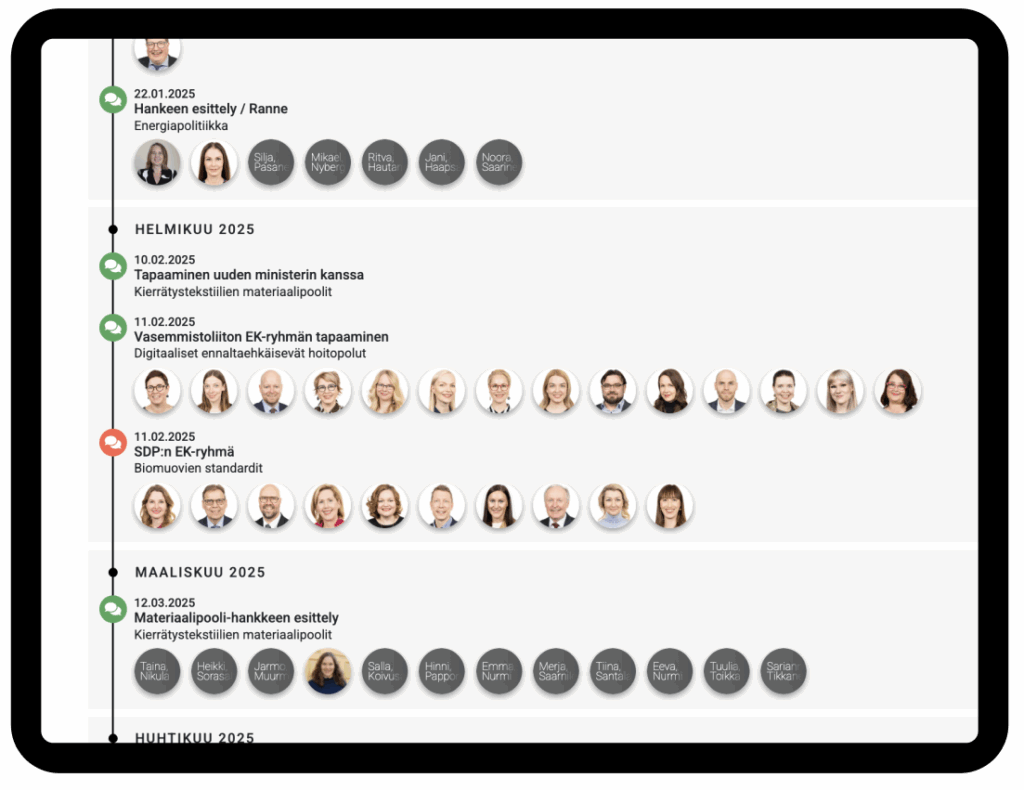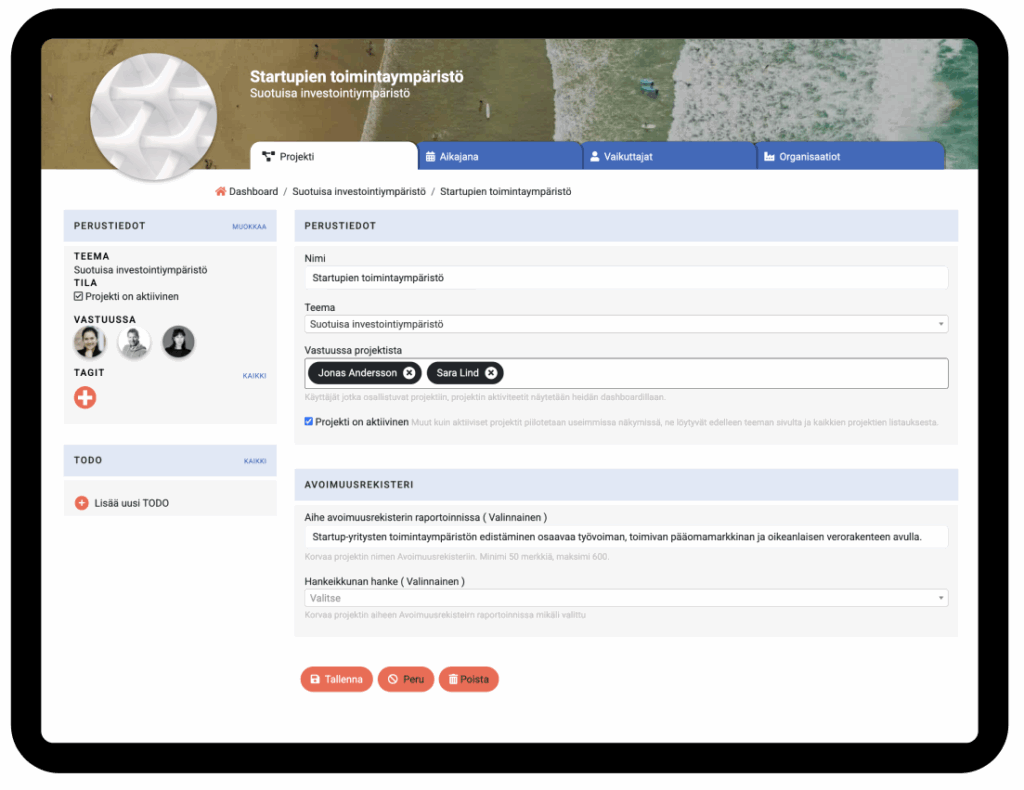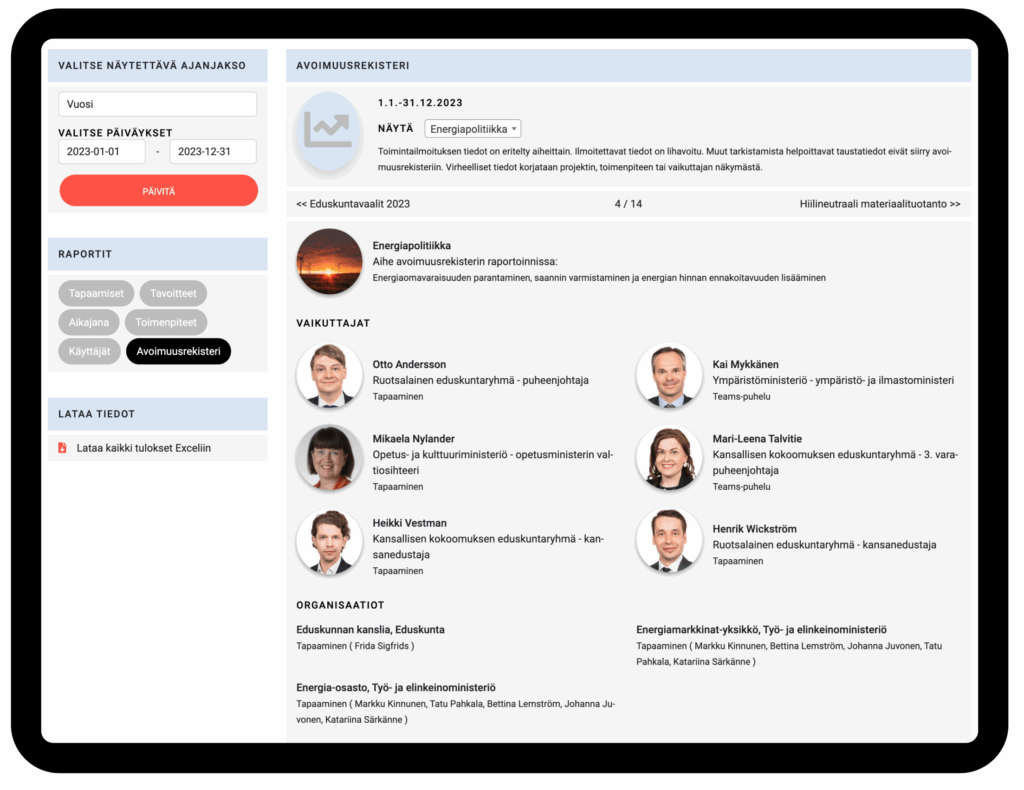Preparing for Transparency Register Reporting – Lobster’s Tips for Verifying Your Lobbying Data
The deadline for submitting your activity report to the Transparency Register is approaching – but don’t worry. With well-maintained data, reporting becomes a straightforward task. Below, we’ve compiled Lobster’s best tips for checking and finalising your information effectively. The key is to review data from multiple angles and share responsibility across your team.
1. Check local stakeholder data – merge duplicate profiles
Accurate reporting requires that all stakeholders are linked to the correct organisations. Make sure to review the following:
- Have all organisations your are reporting for been added to Lobster?
- Are users linked to the correct organisation(s) under which their lobbying activities are reported?
- Are there duplicate stakeholder profiles between your local data and Lobster?

You can find possible duplicate profiles in the GDPR Audit section of the admin dashboard. Profiles can be merged directly within Lobster by linking the local stakeholder profile to the correct one.
For multi-organisation Lobster users:
Ensure that each organisation’s Business ID (Y-tunnus) is added to Lobster. Reporting across multiple organisations works correctly only when this information is in place. If you need to add Business IDs, contact us – note that both Business IDs and user count affect your pricing: support@lobster.ist
2. Assign each user to check their own timeline
The larger the organisation, the more important it is to decentralise responsibility for data accuracy. Each user can verify their own stakeholder engagement history directly via their personal profile’s timeline:
- Does the timeline include all relevant lobbying contacts?
- Have all completed actions been marked as such?
- Are the stakeholders profiles properly recorded in each contact?

If your team already follows good routines when using Lobster, most of the data should be in order. If there are gaps, consider offering additional support and training to your users.
3. Review the project timeline and add required descriptions
Project team should be responsible for reviewing and completing:
- The project’s full timeline of lobbying contacts
- Review that all completed actions been marked as such
- The description of the subject of lobbying (between 50–600 characters), required for the Transparency Register

Alternatively, the project can be linked to an existing legislative window campaign. All Transparency Register-related fields can be edited in the project’s basic information view.
4. Review the Transparency Register report summary
Finally, double-check the project summaries in the Transparency Register report view:
Lobster shows some additional information (e.g. stakeholder positions, individual names) to assist with verification – these will not be submitted in the official activity report.

The following details will be included in the Transparency Register activity report:
- Subjects of lobbying or linked legislative window campaigns
- Targets of lobbying (Lobster identifies whether to report individuals or organisational units)
- Forms of contact used
Remember: Always make edits directly in Lobster. This keeps your reporting history aligned with the submitted activity report – which can be critical, especially if your organisation is later asked to clarify its lobbying activities by the media or other stakeholders.
When your team shares the responsibility and follows a structured review process, preparing your activity report doesn’t have to be a burden. It becomes a transparent, manageable routine.
From Lobster to the Transparency Register – Automatically
When the reporting period begins and Lobster has been authenticated to do the transfer, the interface will directly transfer the disclosure of activities from Lobster to the Transparency Register.
The transfer happens overnight, with no manual action needed. The data is saved as drafts in the register, ready for reviewing and publication. If disclosure data is edited in Lobster – for example, adding a new lobbying target or a subject – the changes are automatically updated overnight in the Transparency Register draft.
Publication takes just moments
As the disclosure of activities is already prepared as a draft in the Transparency Register, the authorised person from the organisation can simply log in to the Register, review and approve the information with just a few clicks. Publishing requires no manual entry or file transfers – the whole process is quick, smooth, and error-free.
